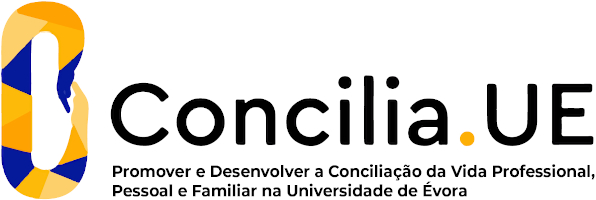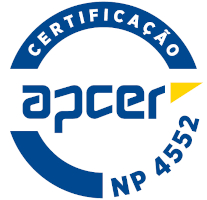2024
History of the XIX Architecture
Name: History of the XIX Architecture
Code: ARQ02518I
3 ECTS
Duration: 15 weeks/78 hours
Scientific Area:
Architecture
Teaching languages: Portuguese
Languages of tutoring support: Portuguese, English
Regime de Frequência: Presencial
Presentation
From the Enlightenment to Romanticism: utopias and realities: architecture and urbanism in Western Europe.
Sustainable Development Goals
Learning Goals
Da Ilustração e do Romantismo às Cidades da Indústria is the central theme of curricular unit of Architecture
of XX Century:
1. Approach to territory and landscape, cities and buildings of XX Century, revelling briefly the Architectonic
Culture of this period, as well as their existential dimensions.
2. Critical identification and characterization of one set main building structures of XX Century, circumscribing
logic, matrices, models and fundamental themes, aiming to increase and enrich students architectonic culture.
Critical and identification dismantling of connexions space, shape, architectonic materiality and fruition in
paradigmatic study cases of XX Century Architectures, looking for providing knowledge and tools able to
stimulate creativity and the
3. Architectural process.
of XX Century:
1. Approach to territory and landscape, cities and buildings of XX Century, revelling briefly the Architectonic
Culture of this period, as well as their existential dimensions.
2. Critical identification and characterization of one set main building structures of XX Century, circumscribing
logic, matrices, models and fundamental themes, aiming to increase and enrich students architectonic culture.
Critical and identification dismantling of connexions space, shape, architectonic materiality and fruition in
paradigmatic study cases of XX Century Architectures, looking for providing knowledge and tools able to
stimulate creativity and the
3. Architectural process.
Contents
1. XX Century Architectures. The genesis of Neo-Classicism and Revivalism. Architectonic Culture and
Disciplinary Reorganization.
2. Illustration and Romanticism Architectures and Territories.
a) Models and buildings themes; conception, articulation and formal, spatial and material meaning.
b) From Historicist and Eclectic Revivalism till Teaching Beaux-Arts in second half of XX Century.
3. Romanticism and Pre-modernity Territories and Architectures.
a) Structural rationalization, new structures and new materialitiy.
b) Urban reforms and new urban models. Approach to Anti-industrialization Architectures. From home
revivalism to the Arts and Crafts and to movement of Garden-City.
c) First answers to social housing issues.
d) From Chicago School till Skyscrapers.
e) National authenticities and answers to historicisms.
4. Permanence of Architectonic Culture of the eighties, in the XX Century.
Disciplinary Reorganization.
2. Illustration and Romanticism Architectures and Territories.
a) Models and buildings themes; conception, articulation and formal, spatial and material meaning.
b) From Historicist and Eclectic Revivalism till Teaching Beaux-Arts in second half of XX Century.
3. Romanticism and Pre-modernity Territories and Architectures.
a) Structural rationalization, new structures and new materialitiy.
b) Urban reforms and new urban models. Approach to Anti-industrialization Architectures. From home
revivalism to the Arts and Crafts and to movement of Garden-City.
c) First answers to social housing issues.
d) From Chicago School till Skyscrapers.
e) National authenticities and answers to historicisms.
4. Permanence of Architectonic Culture of the eighties, in the XX Century.
Teaching Methods
The teaching methodology favours theoretical presentation and promotes the retention of learning through individual and group tasks throughout the semester (continuous assessment):
a. Participatory lectures with the support of slides;
b. Reading and reviewing texts (group work);
c. Tutorial monitoring (in the development of group work);
d. Group work on a 19th century architectural theme, according to the briefing (50%);
e. Written test (50%);
f. Participation and attendance (with no weighting factor).
This course is theoretical, so the attendance regime does not apply. However, it is highly recommended that students attend classes, which is only possible if they are present.
This course can be assessed in one of the following ways, in accordance with the Academic Regulations (AR), which are available on the SIIUE:
Continuous Assessment regime (CA);
Final Assessment regime (FA).
It is recommend that you consult The Academic Regulations.
a. Participatory lectures with the support of slides;
b. Reading and reviewing texts (group work);
c. Tutorial monitoring (in the development of group work);
d. Group work on a 19th century architectural theme, according to the briefing (50%);
e. Written test (50%);
f. Participation and attendance (with no weighting factor).
This course is theoretical, so the attendance regime does not apply. However, it is highly recommended that students attend classes, which is only possible if they are present.
This course can be assessed in one of the following ways, in accordance with the Academic Regulations (AR), which are available on the SIIUE:
Continuous Assessment regime (CA);
Final Assessment regime (FA).
It is recommend that you consult The Academic Regulations.
Assessment
The CA system is made up of 2 components:
1 group assignment (GA) + 1 written test (WT). Both components take place during term time.
To be exempt from the resit exam, each component of the CA must have a minimum mark of 10/2. The Final Grade is calculated according to the following formula: (0.5 x GA) + (0.5 x WT).
Students who fail the CA only have access to the resit exam (written) (W). The Final Grade takes into account the highest mark obtained in one of the CA components Group Assignment (GA) or Written test (WT) and is calculated according to the following formula:
(0.60 x W) + (0.40% x GA/WT).
The FA regime consists of two periods, the regular exam and the resit exam.
The regular exam, like the resit exam, consists of two components, written (W) and oral (O). To pass, each component must have a minimum mark of 10/20. The Final Grade of the regular exam and of resit exam is calculated according to the following formula: (0.5 x W) + (0.5 x O).
1 group assignment (GA) + 1 written test (WT). Both components take place during term time.
To be exempt from the resit exam, each component of the CA must have a minimum mark of 10/2. The Final Grade is calculated according to the following formula: (0.5 x GA) + (0.5 x WT).
Students who fail the CA only have access to the resit exam (written) (W). The Final Grade takes into account the highest mark obtained in one of the CA components Group Assignment (GA) or Written test (WT) and is calculated according to the following formula:
(0.60 x W) + (0.40% x GA/WT).
The FA regime consists of two periods, the regular exam and the resit exam.
The regular exam, like the resit exam, consists of two components, written (W) and oral (O). To pass, each component must have a minimum mark of 10/20. The Final Grade of the regular exam and of resit exam is calculated according to the following formula: (0.5 x W) + (0.5 x O).
Teaching Staff
- Júlia Zurbach Varela [responsible]





















